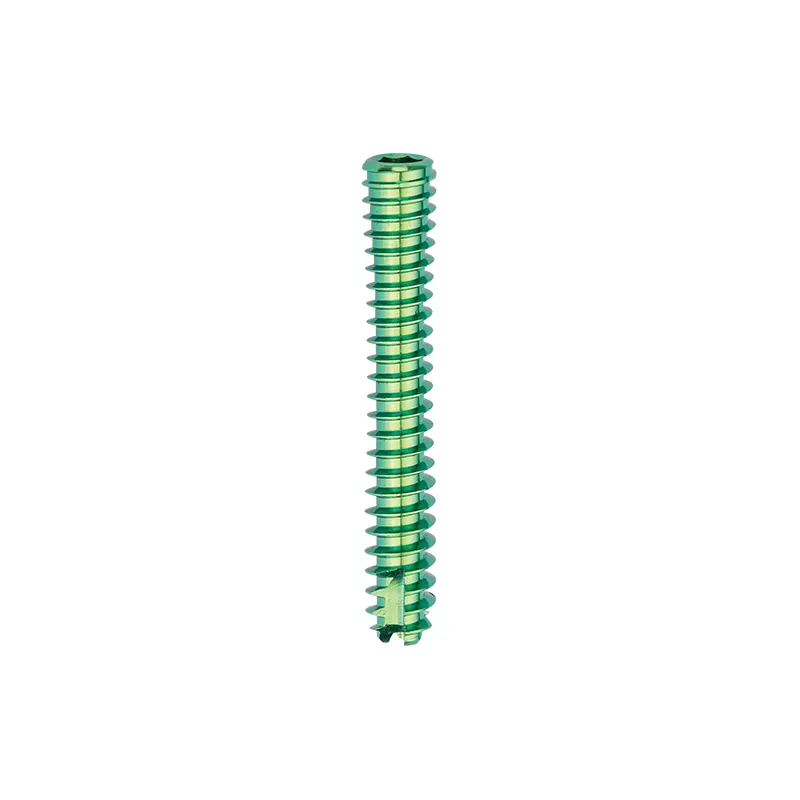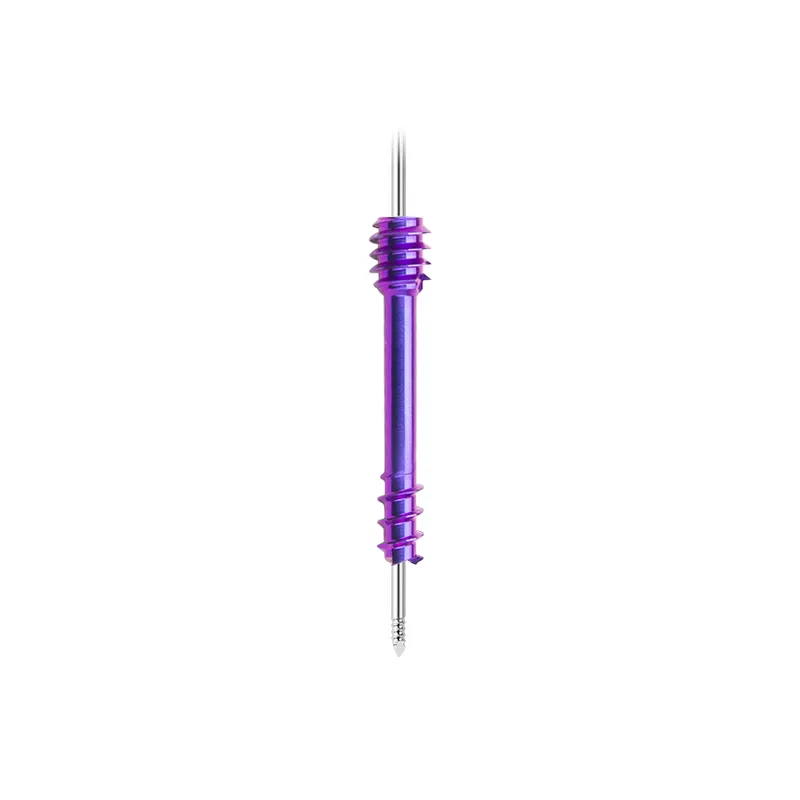Enhancing Recovery and Independence with Advanced Solutions
For patients recovering from joint damage, fractures, or degenerative diseases, regaining mobility is often a primary goal. One of the most significant advancements in medical technology to support this outcome is the orthopedic implant. These devices are meticulously designed to restore movement, reinforce structural integrity, and promote healing in damaged musculoskeletal systems. Whether it's a hip replacement, spinal support system, or fracture fixation, the orthopedic implant plays a transformative role in long-term recovery and physical independence.
Functional Support and Biomechanical Restoration
Structural Reinforcement
Orthopedic implants provide immediate and essential structural support to bones and joints that have been compromised by trauma, disease, or age-related degeneration. By reinforcing the skeletal framework, these implants enable patients to regain the stability required for everyday movements. This is especially critical in cases where natural bone integrity has been lost, and the patient is at risk of further injury without internal support.
Bone plates, rods, and screws are used to fixate fractures, ensuring that bones remain properly aligned during the healing process. These types of orthopedic implants are engineered to mimic the mechanical strength of bone, providing the necessary rigidity to support body weight and movement. As healing progresses, the orthopedic implant continues to maintain this stability, allowing for gradual recovery and physical therapy.
Joint Function and Load Distribution
Another key benefit of an orthopedic implant is its ability to restore the function of compromised joints. Devices such as knee, hip, or shoulder replacements are designed to replicate the natural articulation of joints. By distributing mechanical loads evenly across the implant and adjacent bone structures, these devices minimize stress concentrations that could cause pain or damage.
In joint replacement procedures, the orthopedic implant is precisely shaped and positioned to accommodate the patient’s unique anatomy. This customization improves the alignment and biomechanics of the joint, allowing for smoother, more natural movement. Over time, this restored joint function leads to improved mobility and a better quality of life.
Long-Term Healing and Biological Integration
Promoting Bone Growth and Healing
Modern orthopedic implants often incorporate materials and surface treatments that encourage biological integration with surrounding tissues. Titanium and its alloys, commonly used in orthopedic implant designs, are biocompatible and support osseointegration—where bone grows directly onto the surface of the implant.
This direct bonding not only strengthens the implant’s hold but also enhances the body’s natural healing process. The orthopedic implant becomes an extension of the skeletal system, reducing the risk of loosening or failure over time. This integration is vital for long-term success and durability, especially in load-bearing joints or active individuals.
Minimizing Complications and Revisions
Advances in orthopedic implant materials and design have significantly reduced the likelihood of postoperative complications. By minimizing wear and corrosion, these modern implants extend the device’s lifespan and reduce the need for future surgical revisions. Some implants also incorporate antimicrobial coatings to prevent infections, which can severely impair mobility and delay recovery.
When patients experience fewer complications, they can return to daily activities sooner and with greater confidence. This uninterrupted rehabilitation process directly contributes to improved long-term mobility and independence.

Personalization and Patient Outcomes
Customized Fit and Function
The effectiveness of an orthopedic implant is often linked to how well it fits the individual patient. Using imaging technologies like CT scans and 3D modeling, surgeons can create personalized implants that align perfectly with the patient’s anatomical structure. This precision reduces stress on surrounding tissues and promotes more natural movement.
Customized orthopedic implants are especially beneficial in complex joint replacements or reconstructions, where off-the-shelf solutions may not offer an ideal fit. By tailoring the implant to the patient, the risk of joint instability, misalignment, and premature wear is minimized, leading to superior long-term mobility outcomes.
Enhanced Rehabilitation Strategies
An orthopedic implant is not a standalone solution; it functions as part of a comprehensive rehabilitation strategy. After surgery, patients undergo physical therapy to regain strength, flexibility, and coordination. The design and placement of the orthopedic implant influence how effectively a patient can engage in these exercises.
When implants are designed with rehabilitation in mind, they facilitate faster recovery and a smoother transition to normal activities. Features such as range-of-motion allowances and low-friction articulating surfaces help patients perform necessary movements without discomfort, accelerating the healing process.
Technological Innovations and Material Advances
Smart Implants and Real-Time Monitoring
Recent innovations in orthopedic implant design have led to the development of smart implants—devices equipped with sensors that monitor loading, alignment, and healing status. These intelligent systems can provide real-time feedback to physicians and patients, allowing for more personalized and responsive care.
Smart orthopedic implants are particularly beneficial in high-risk patients or complex surgeries, where close monitoring is essential. By collecting data during the recovery process, healthcare providers can make timely interventions, reducing the risk of complications and enhancing mobility outcomes.
Lightweight and Durable Materials
Material science plays a critical role in improving orthopedic implant performance. Advances in composite materials, ceramics, and metal alloys have led to the creation of lighter, stronger, and more durable implants. These characteristics are essential for maintaining function over the years, especially in younger or more active patients.
A lightweight orthopedic implant places less stress on surrounding muscles and bones, making movement easier and more natural. Meanwhile, improved durability ensures the implant remains effective for decades, reducing the likelihood of revision surgery and preserving mobility over the long term.
Psychological and Lifestyle Benefits
Confidence and Independence
Restoring mobility with the help of an orthopedic implant does more than improve physical capabilities—it enhances psychological well-being. Patients often regain confidence in their ability to move, engage in social activities, and perform daily tasks independently. This emotional uplift plays a crucial role in recovery and long-term health.
The orthopedic implant, by enabling pain-free movement and reliable function, helps patients reclaim their independence. Whether it’s walking without assistance or returning to work and hobbies, this newfound mobility improves overall life satisfaction and mental health.
Improved Quality of Life
Mobility is closely tied to quality of life. The ability to move freely, without discomfort or fear of injury, opens up opportunities for personal growth, travel, exercise, and social interaction. Orthopedic implants make this possible for millions of people worldwide, especially those who might otherwise face a future of limited movement or dependency.
As the global population ages and the demand for mobility solutions increases, the role of the orthopedic implant becomes even more vital. It is not just a medical device but a gateway to a more fulfilling, active life.
FAQ
How long do orthopedic implants last?
Many orthopedic implants can last 15 to 20 years or more, depending on the type of implant, materials used, patient activity level, and overall health.
Are orthopedic implants safe for everyone?
Most people tolerate orthopedic implants well, but individual factors such as allergies, bone quality, and medical history are considered before implantation.
Can orthopedic implants trigger metal allergies?
Some individuals may have sensitivities to metals. In such cases, surgeons may opt for hypoallergenic materials like ceramic or specific titanium alloys.
Will I be able to resume normal activities with an orthopedic implant?
Yes, many patients return to normal or near-normal levels of activity after successful implantation and rehabilitation.
 EN
EN
 FR
FR
 ES
ES
 AR
AR

